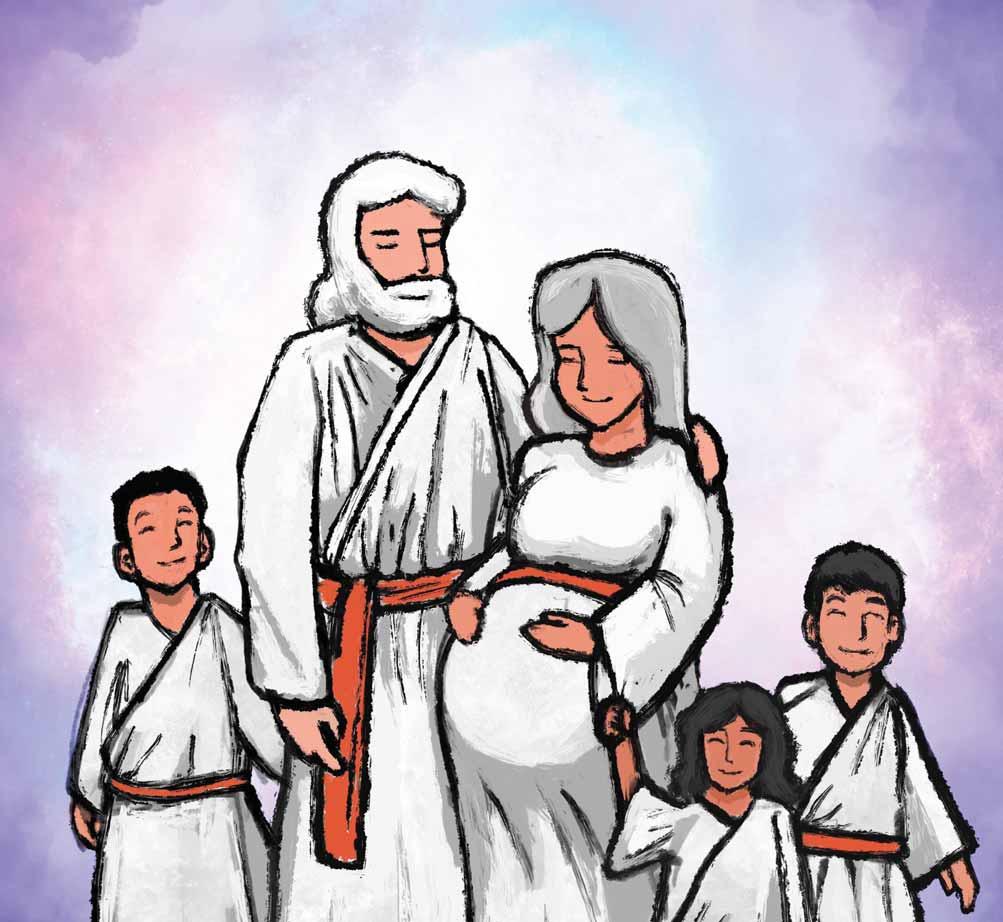

Sex and pregnancy forever?
Heaven: A place of everlasting rest and peace or an eternal continuation of earthly experiences? The notion of “eternal increase” — that resurrected women and men would have “spirit children” through sexual procreation — remains a topic of debate. • Page 2
Is this the Latter-day Saint idea of heaven? Sex — and pregnancy — forever?
The notion of “eternal increase” — that resurrected women and men would have “spirit children” through sexual procreation — remains a topic of debate.By PEGGY FLETCHER STACK | The Salt Lake Tribune
All Christians believe in a hereafter. But it’s here, in this life, that they disagree about the after, the next life.
Will it be a place of everlasting rest and peace beyond human imagining and or an eternal continuation of earthly experiences?
Brigham Young, the second “prophet, seer and revelator” in The Church of Jesus Christ of Latter-day Saints, fell clearly in the second camp.
Young, who led Mormon pioneers in a mass exodus to Utah and was seen by members as the “Lion of the Lord,” believed “glorified” bodies would have plenty of sex in the highest realms of heaven — but just the reproductive kind.
He taught that exalted women and men would produce “spirit children” in the literal sense of how babies are created on Earth.
To Young, “sexual procreation [was] a foundational law of the cosmos,” historian Jonathan Stapley reports in his piece “Brigham Young’s Garden Cosmology.”
For heavenly women, that meant being pregnant for eternity in a cycle of “endless procreation.”
The polygamous prophet “asserted that all humans are the children of God but in a very different manner,” Stapley writes. “They are children, not in an adoptive sense or in some vague mirroring dating to the creation, but in a fundamentally material and biological sense. In this way Young’s cosmology is extremely and literally naturalistic.”
Not many in today’s church teach such a literal and stark idea, he says, but it remains “a wildly popular folk belief” and, from time to time, still is preached over the pulpit.
Similar ideas about eternity continue to be reflected in modern church doctrine — with profound effects on the here and now.
In its simplest form, Latter-day Saints preach a heterosexual heaven, where only male-female couples enjoy the creative processes and live with God in the afterlife.
And, by extension, those with other sexual orientations will either be made straight or be alone for eternity.
A vision beyond time
For many in the Latter-day Saint belief system, divine reproduction remains “a central tenet,” scholar Taylor Petrey writes in his landmark piece, “Toward a Post-Heterosexual Mormon Theology,” despite “its rather thin canonical support.”
The problem, he notes, is defining what this “eternal increase” means.
Church founder Joseph Smith taught that individual identities — known as “intelligences” — were not created but rather always existed independently.

Young tried to reconcile Smith’s view with his belief in “spirit birth,” suggesting four steps on human progress toward godliness: intelligences, spirit bodies, mortal bodies, followed by resurrected bodies.
“Heavenly Father and Heavenly Mother may not be the ‘parents’ of intelligences, but are parents of spirits — in some sense having given ‘birth’ to them,” Petrey writes of Young’s teachings. “Advocates of ‘spirit birth’ based on heterosexual reproduction generally insist that it is similar, if not identical, to the birth of mortal bodies.”
Such a notion may be tied to “the promises of eternal increase, ‘a continuation of the seeds forever and ever’ [from the Latter-day Saint scripture in Doctrine and Covenants 132:19)] in the revelation given on celestial [plural] marriage.”
In this approach, wives and husbands are eternally engaged in the reproduction of spirit children.
In the second half of the 20th century, these ideas resurfaced to “combat the rise of feminism,” Petrey says in an interview.
If the eternal destiny of women is literal childbirth throughout infinity, he says, why should they seek anything else in this life?
Sex in heaven becomes ‘official’
In the 19th century, sex in heaven was “more or less
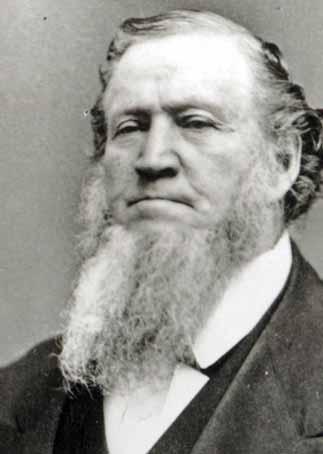
official,” says William V. Smith, author of a book on Joseph Smith’s most famous sermon, the King Follett discourse. “It really gets going by the 1850s as the metaphysics of polygamy. After polygamy fades, its public teaching fades some, but it remains much of the logic of eternal marriage and it appears as the reason for God’s tutoring mankind — mankind are deserving because their spirits are God’s offspring in real gestational terms.”
It may have begun in an early era, Smith says, but it was continuously “nurtured” by later leaders in the 20th century, including apostles James E. Talmage, Boyd K. Packer, Bruce R. McConkie and Marion G. Romney.
In August 1916, Talmage wrote “The Father and the Son: A Doctrinal Exposition by the First Presidency and the Twelve Apostles” for an official church publication.
In it, Talmage concludes: “So far as the stages of eternal progression and attainment have been made known through divine revelation, we are to understand that only resurrected and glorified beings can become parents of spirit offspring. Only such exalted souls have reached maturity in the appointed course of eternal life; and the spirits born to them in the eternal worlds will pass in due sequence through the several stages or estates by which the glorified parents have attained exaltation.”
Because mortals are “‘literally’ children of God,” William Smith says, “it is the fulcrum on which anti-gay marriage rests because sex is eternal and thus sexual

“While few Latter-day Saints would identify with caricatures of having their own planet, most would agree that the awe inspired by creation hints at our creative potential in the eternities.”
“BECOMING LIKE GOD” | An official church essay.
Sex in heaven
intercourse in heaven is, too — it is the meaning behind heaven.”
What about same-sex relations in heaven?
What would it mean for Latter-day Saint same-sex relationships, Petrey asks, if the church substituted the tentative doctrine of literal divine reproduction for other models of “birth”?
The story of Adam and Eve in Latter-day Saint scripture and ritual is often “cited as the example of divinely authorized heterosexuality,” he writes. “Yet the creation of both Adam and Eve does not in any way affirm heterosexual reproduction as the method of divine creation either spiritually or materially.”
God the Father and Jesus Christ created Adam, Petrey writes, while Eve was “reproduced” from a male body.
While the church sees a “necessary link between marriage and procreation, in practice having children is neither a requirement for Latter-day Saint marriages after they have been sealed, nor is the ability to have children a prerequisite for ‘sealing.’ Neither marriage nor sex is thought of in exclusively procreationist terms.”
If heaven is not primarily a place “for reproductive sex between married couples,” Petrey says, “could there also be nonreproductive sex?”
And could that include same-sex couples?
Is queerness eternal?
“All human beings — male and female — are created in the image of God,” the church’s family proclamation says. “Each is a beloved spirit son or daughter of Heavenly Parents, and, as such, each has a div ine nature and destiny. Gender is an essential characteristic of individual premortal, mortal, and eternal identity and purpose.”
If gender is eternal, is queerness as well?
Latter-day Saint Conor Hilton describes himself as “asexual,” a person who is not involuntarily aroused by the sight of beautiful women or naked photos of
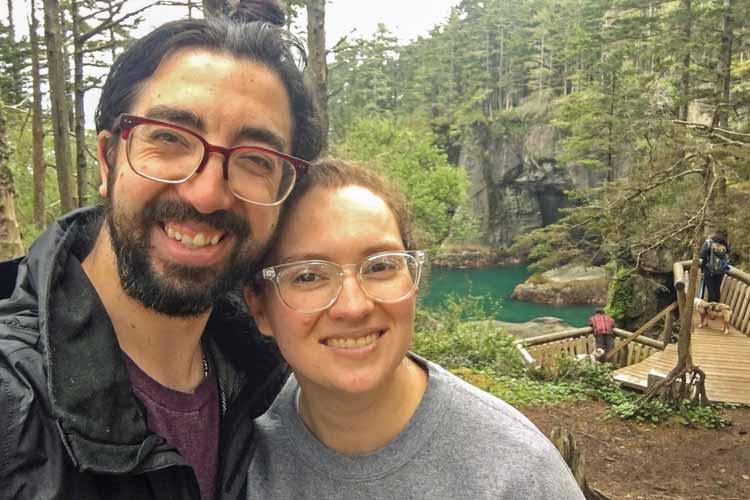
either sex.
Hilton, who is working on a doctorate in English at the University of Iowa and is married to an asexual Latter-day Saint woman, finds himself in the LGBTQIA world — under the queer category. And it feels central to his being, not something he necessarily wants to discard in the hereafter.
“It feels as much a part of who I am as any other facet of my identity,” Hilton writes in an online essay. “Sexual orientation feels eternal to me — that’s not to say that there’s not a fluidity there, but I don’t think that fluidity is going to be more or less than it is here. …It feels right to me … that sexual orientation is a part of our eternal identity.”
Some Latter-day Saint leaders have suggested that after death everyone will be “restored,” which to them means everyone will be heterosexual.
“The implication that I will die, have the veil removed, and suddenly have some raging desire for sex,” Hilton writes, “is just weird and strange and bizarre.”
He says it also implies that he is “broken and missing something and needs to be fixed.”
That isn’t a “pleasant” proposal, Hilton explains. And it doesn’t “resonate with the spiritual experiences I have had communing with the divine about being ace [asexual]. I’ve only felt love and acceptance and an embrace for my better understanding of who I am.”
The best solution is to believe “there won’t be any sex in heaven,” he writes. “Like, no one will feel any sort of sexual attraction — not to say that there won’t be love or romance or physical attraction, but that sexual attraction just won’t be a part of the picture because celestial creation is a totally different process and doesn’t
require sex. That sounds fine/great to me, but I get that I am probably in a very small minority.”
Imagining “queer folks will be turned into cisgender, heterosexuals in the next life,” writes Blaire Ostler, author of “Queer Mormon Theology: An Introduction,” is akin to “celestial genocide.”
In this life, it can push LGBTQ members to self-loathing.
“If queer people will be ‘fixed’ upon mortal death,” Ostler points out, “mortal death becomes the quickest path to end our pain.”
Does ‘eternal increase’ remain a belief
Early teachings on eternity still resonate in some quarters like the idea of “divination.”Joseph Smith’s King Follett

Sex in heaven
≥ Continued from 4
discourse inspired a popular Latter-day Saint couplet: “As man now is, God once was; as God now is, man may become.”
Yet in a 2001 interview with Time magazine, then-church President Gordon B. Hinckley was asked about whether members believe they will become gods.
“I don’t know that we teach it,” Hinckley replied. “I don’t know that we emphasize it. I haven’t heard it discussed for a long time in public discourse.”
The same could be said for the idea of eternal reproduction.
Some members say they were taught this idea while growing up — by church education teachers, lay leaders or their parents — while others have not heard it.
Utahn Sherri Park was told about eternal increase but says on Facebook she “expected it to be different from earthly pregnancy and less painful.”
Jen Blair, who lives in Idaho, did not hear about “eternal pregnancy, but I was absolutely taught the phrase ‘eternal increase’ as a reward for righteousness. It was a phrase that I heard dozens and dozens of times.”
On the other hand, Texan Karyn Dudley is a lifelong Latter-day Saint and says she has never heard or been taught the “eternal pregnancy theory.”
In her family, it was “eternal increase of the ancestral line. … As African Americans, culturally we call upon our ancestral line and believe they provide wisdom, insight and protection from the other side of the veil, and, as we join them, we provide the same upon our future generations…finding our eternal family connections.”
When she hears about sex in heaven, she thinks: “The Utah and Idaho Latter-day Saints are at it again.”
Jaxon Washburn, an “older zoomer/ young millennial” in Boston, says he never heard this notion.
“Not once in any LDS setting was I taught that pregnancy for eternity was part of the equation of ‘eternal increase,’” Washburn writes. “It was always framed as spiritual adoption rather than viviparous spirit birth.”
Justin Martinez, who lives in Nevada, echoes that.
“In my nearly 16 years of church membership, I have attended and been part of dozens of English and/or Spanish speaking wards, branche and groups throughout the western United States and southwest Peru and have never heard such rhetoric or reasoning
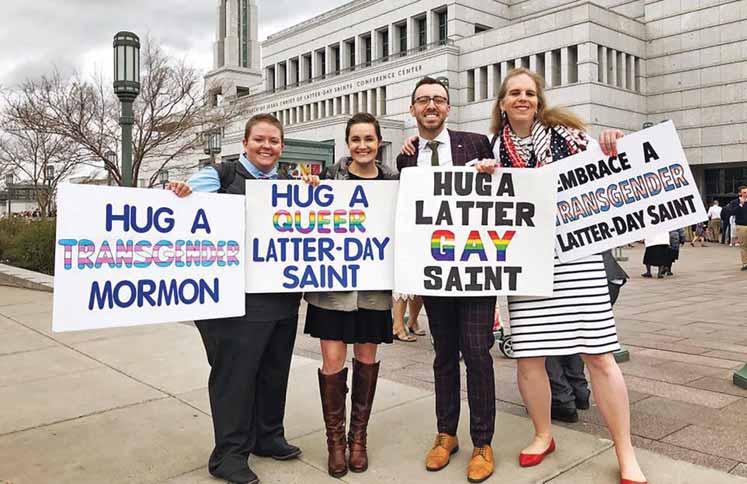
among any of them,” Martinez writes on Facebook. “Only in anti-Mormon material have I ever seen this assertion made.”
Indeed, these days the idea is used as a joke and punchline, invoking much mockery on social media.
The church’s official essay, “Becoming Like God,” refers to such ridicule.

“Latter-day Saints’ doctrine of exaltation is often … reduced in media to a cartoonish image of people receiving their own planets,” it states. “… While few Latter-day Saints would identify with caricatures of having their own planet, most would agree that the awe inspired by creation hints at our creative potential in the eternities.”
For Utah essayist Jody England Hansen, eternal increase was a lovely concept well beyond physical pregnancy.
“Most discussions in my family or academic settings saw eternal increase as
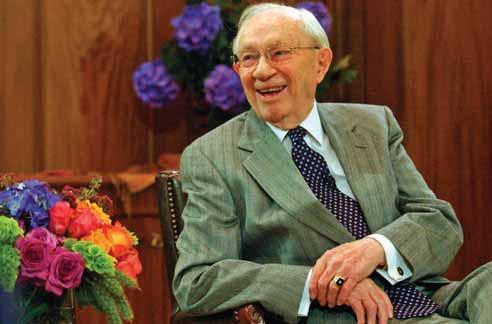
all coexist eternally with the gods, and that we became their spirit children by being inspired by them, and following them into greater spheres of existence.”
It was not, she notes, about biology.





People work on their computers at Sunset Coffee Co. last month. A growing number of young Latter-day Saints report consuming at least some coffee with only a third of millenial members saying abstaining from coffee and tea is essential to being “a good Mormon.”
LEAH HOGSTEN The Salt Lake TribuneWhy more and more young Latter-day Saints are drinking coffee
By SIENA DUNCAN | The Salt Lake TribuneWhen Allison Zenger moved from Colorado to Utah for college, she expected most of her peers to avoid coffee shops and have hot chocolate rather than a latte. But she found herself surrounded by people who were doing just the opposite.
The 22-year-old Zenger is a member of The Church of Jesus Christ of Latter-day Saints, a religion whose members are taught to abstain from coffee and tea along with tobacco and alcohol. Since Salt Lake City is the headquarters of the global church and the Beehive State is predominantly Latter-day Saint, Zenger assumed her time at Logan’s Utah State University would mean full immersion in the religion’s Word of Wisdom health code.
That didn’t happen. Zenger, in fact, tried coffee for the first time in college as an attempt to fit in.
“It was definitely more of a jump-onthe-bandwagon kind of thing,” Zenger said. “I was like, ‘I want to hold the Starbucks cup, I want to look cool.’”
Though Zenger didn’t like coffee after trying it a few times, her experience is shared by plenty of younger U.S. Latter-day Saints, according to a 2018 study. Only a third of millennial members said that abstaining from tea and coffee was essential to being “a good Mormon,” compared to 52% of baby boomers.
Roughly a quarter of active U.S. Latter-day Saints said they had consumed coffee, tea or alcohol in the past six months. One in 5 temple recommend holders — which requires interviews with church leaders affirming their adherence to the Word of Wisdom — reported consuming coffee or tea in the past six months.
Zenger now drinks coffee sparingly and typically gets a chai at coffee shops. Though her parents always wanted her
to heed church tenets on such drinks, Zenger said times have changed. People her age are more comfortable pushing the boundaries and finding their own interpretations of church dogma.
“When my parents were my age,” she said, “it was definitely frowned upon. You just didn’t do it. No questions asked. In today’s generation, a lot more people are asking those questions.”
The Word of Wisdom in the early church
Food and drink restrictions originated during the church’s early years with founder Joseph Smith. He reported receiving, by revelation, the Word of Wisdom, which is now canonized. It declares that “hot drinks are not for the body or belly.” Top church leaders have said that means coffee and tea.
In the 1800s, members saw Smith’s guidance as exactly what it stated — a
word of wisdom, not a commandment, said Patrick Mason, chair of Mormon history and culture at Utah State University. Earlier Latter-day Saints drank, smoked and consumed coffee and tea. In the early 1900s, the faith’s leadership began to examine the Word of Wisdom anew, with debates surrounding coffee, tea and even caffeinated soft drinks.
It eventually ended with coffee and tea being proclaimed off-limits.
The 43-year-old Mason grew up with a stigma around caffeinated sodas — despite the church never openly forbidding them. Older members told him drinking soda wasn’t a good idea. Many of his Latter-day Saint friends, however, drank Coke and Pepsi.
The Utah-based faith has reaffirmed in recent years that caffeinated soft drinks are not prohibited under the Word of Wisdom.
“My sense,” Mason said, “is that a lot of
Please see
Coffee
young people today feel very much the same way about coffee and tea that people of my generation did about drinking Coke.”
A coffee culture emerges
The owners of Sandy’s Sunset Coffee Co. have witnessed that cultural shift since opening in 2008. The location has been a coffee shop for 45 years, but it mostly catered to older people, said co-owner McKenzie Norton.
When her husband, Neil, bought the place after working for the previous owners, she said, he hoped to reach a younger crowd.
“Where do you hang out in Sandy?”
Norton asked. “There’s not a whole lot out here. And so that was one of his biggest things when he took it over — teens having somewhere to go.”
The goal was to create a welcoming space for everybody, Norton said, but not everyone understood that.
More than a decade ago, a few years
after they had opened, Norton recalled, a local Relief Society (the church’s organization for Latter-day Saint women) spread flyers around the neighborhood falsely stating that Sunset Coffee was selling alcohol and illicit drugs over the counter. The women warned parents not to let their kids come to the shop.
“That is so beyond outrageous,” she said. “For them to look at us like that, it was hurtful.”
Norton took those allegations to the Sandy City Council and put a stop to the leaflets, she said. She believes the stigma around coffee is what caused the rumors to spiral years ago — despite Sunset Coffee having noncoffee options on its menu.
She also believes that stigma has faded. The church eased its counsel on tattoos and multiple piercings this past year, and she has seen more and more customers enter the coffee shop to get a chai, like Zenger, or a lemonade or an herbal tea. She has even served some who are sipping their first coffee.
“The church is changing,” she said. “I would have never guessed they would have picked tattoos over coffee, though.”
Please see COFFEE, 10















Coffee
≥ Continued from 9
Will coffee prohibition end?
The likelihood of the church lifting its restrictions on coffee and tea is nebulous, Mason said. There have been times in history when leaders have examined alternative interpretations — the Word of Wisdom, for example, also calls for members to use meat sparingly, which then-President Lorenzo Snow pushed for the church to adhere to in the 1890s. But there haven’t been any formal expansions on that policy since then.
“The language of the revelation itself is not nearly as locked down as the current policy and practices are,” Mason said. “It’s very clear the current policy is an interpretation of scripture. And interpretations can change.”
It’s not outside of the realm of possibility that drinking coffee and tea could become accepted by the church, he said. The probability of the actual scriptural verses changing is seen as far less likely.
Globally, Latter-day Saints have also
Brigham Young’s southern Utah wine mission fueled LDS profits, prophecy and alcoholism
The Word of Wisdom wasn’t the same back then. Members not only consumed wine but also manufactured it.By MARK EDDINGTON The Salt Lake Tribune
St. George • Since nearly all the early pioneers who settled southwestern Utah were members of the predominant faith, it wouldn’t seem like they would cotton to growing grapes and making wine. Yet history shows the region was once home to thriving vineyards.
County on “self-sufficiency missions” to experiment with the area’s suitability for certain crops and trades, it was not a shock that the fruit of the vine was included in the settlers’ to-try list.
Perhaps more surprising is that where cotton, silk, sugar beets, pottery and mining met with failure, the Dixie Wine Mission — as it was known — was a smashing success, at least initially.
combined culture and religious practices where formal doctrine does not fill in the blanks. Missionaries report substances like yerba maté in Argentina, masala chai in India, kvass in Russia and airag in Mongolia are seen by many as appropriate for members to drink, although missionaries often abstain.
Despite a shifting culture, many younger churchgoers still stick to the Word of Wisdom, including the prohibition on coffee.
Maggie Cowdell used to drink coffee from time to time when she was in high school, the 22-year-old said. She would buy one at Starbucks with her friends or sample her nonmember aunt’s coffee. Since serving a Latter-day Saint mission, however, she’s been stricter about avoiding it.
Cowdell said coffee is more nuanced than alcohol. It’s difficult for some members to understand why they shouldn’t drink it, she said, especially for those her age.
“It’s definitely one of those things,” she said, “that I believe God asks us to do that we don’t fully understand the reasons for now.”
It’s often a hidden history, though, like the box that pioneer-prophet Brigham Young and other leaders of The Church of Jesus Christ of Latter-day Saints placed in the cornerstone of the St. George Temple several years before its 1877 dedication. Besides inserting records, coins, newspapers and a silver plate, the church leaders also bequeathed a bottle of locally grown fine wine to posterity.
Moreover, many Latter-day Saints paid their tithing in wine, which was often stored in 50-gallon barrels in church offices in the area for use in Communion and to sell to “gentile” miners and other nonmembers.
That may come as a revelation to some, especially to those who know Latter-day Saints are barred by the faith’s health code from using tobacco products or drinking coffee, tea and alcoholic beverages.
But the Word of Wisdom church founder Joseph Smith said he received in 1833 by revelation was viewed more as wise counsel in the latter half of the 19th century than the ironclad commandment it is today.
So when Young sent Latter-day Saints to present-day Washington
Breaking the Word of Wisdom
In April 1861, Young delivered a General Conference sermon in which he outlined the economic rationale for “breaking” the Word of Wisdom with respect to Latter-day Saints using and growing tobacco.
“If we use it, let us raise it here,” he told conferencegoers. “... We annually expend only $60,000 to break the Word of Wisdom, and we can save the money and still break it, if we will break it.”
Lindsay Hansen Park, executive director of the Sunstone Education Foundation and co-host of the “Sunstone Mormon History” podcast, said while Young’s sermon did not mention wine, the justification for cultivating those vineyards was essentially the same as it was for tobacco.
Another justification for wine, this one scriptural, is found in the faith’s Doctrine and Covenants, in which Smith relays the revelation he received instructing Latter-day Saints to use water for their sacrament, or Communion, unless wine “is made new among you.”
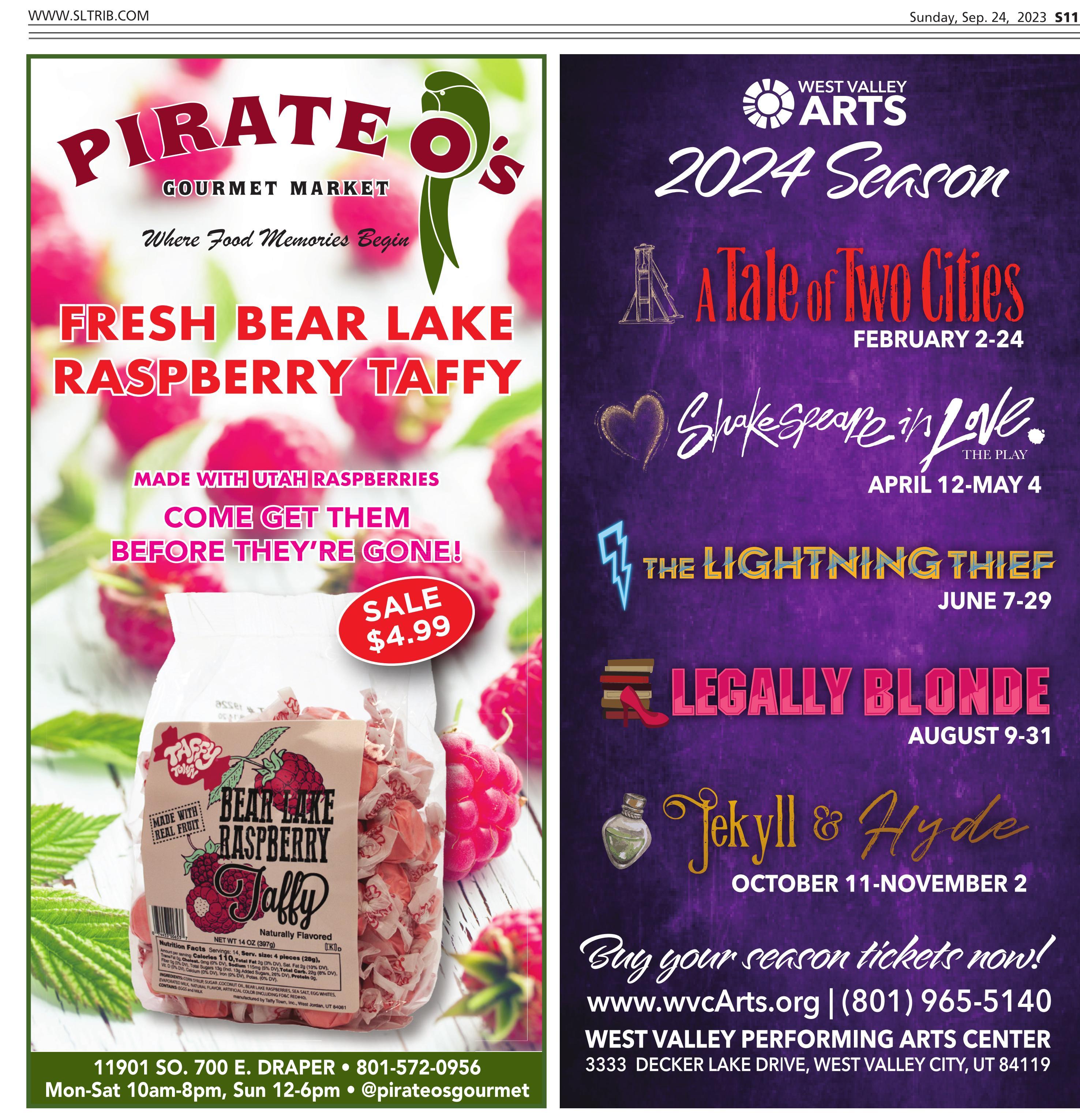
Wine
≥ Continued from 10
For his part, Young apparently was gung-ho about the prospect, later remarking that he anticipated “the day when we can have the privilege of using, at our sacraments, pure wine, produced within our borders.”
Days of wine and an American Moses
Young, sometimes dubbed an American Moses, was a man of action as well as words. In October 1861, he dispatched 309 families on a mission to experiment with cotton and other crops and to fulfill his vinery vision. With the onset of the Civil War, Young thought the church could sell cotton to the Union, which no longer was receiving the crop from the secessionist Southern states.
As for the wine, Young said Utah’s southern colonies should supply the Utah Territory with wine for “the holy sacrament, medicine and for the sale to outsiders” who were not Latter-day Saints, according to “Dixie Wine,” a thesis Dennis R. Lancanster published in 1972 while pursuing a master’s degree at churchowned Brigham Young University.
That colonization effort, according to Hansen Park and Lancaster, included 30 Swiss families who were church converts, many of whom were winemakers. Led by Daniel Bonelli, the would-be vintners arrived in what is now Santa Clara on Nov. 18, 1861, and went to work.
To further bolster the effort, Young tasked a group of seasoned horticulturists with aiding the endeavor. One of them was Walter D. Dodge, who Lancaster said became known as “the father of the grape in southern Utah.” When Dodge moved from San Bernardino, Calif., to southwestern Utah, he brought fruit trees and grapevines with him. Coopers, or barrel makers, were also called to what became known as the Dixie Wine Mission.
The pioneer transplants found the area’s fertile ground, warm and dry climate and long growing season to be ideal for cultivating grapes, leading St. George nurseryman Luther S. Hemenway to gush:
“In this wild, broken desert land where once volcanoes and earthquakes reigned supreme …, the grape has found a home, as congenial, I presume, as it enjoys in Syria or Persia,” he is quoted as saying in Kate B. Carter’s book “Heart Throbs of the West.”
Michael Moon, a docent at Leeds’ Silver Reef Museum, just north of St. George, said the possibilities also intrigued his great-great-grandfather, Hugh Moon,
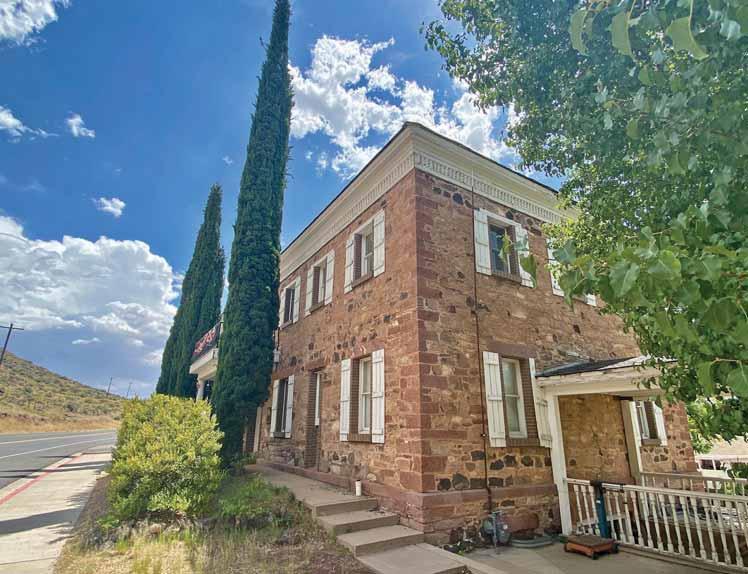
upon his arrival in southwestern Utah in December 1861.
“He tried some of the grapes and said, ‘Hey, they are not bad,’” Moon recalls his ancestor saying. “Then he took a gulp from the Virgin River and said, ‘If you drink heartily of it, you’ll puke.”
Despite the putridness of the water, Latter-day Saints opted for water in their sacrament services until the vintners could perfect their potions. The tips grape growers received from the St. George Gardeners’ Club and The Utah Pomologist, Joseph Ellis Johnson’s newspaper devoted to horticulture, expedited the process.
Hansen Park said the Mission and Isabella grapes proved especially adaptable to southern Utah, but the area eventually boasted more than 100 varieties of grapes.
Aside from supplying wine for the sacrament, Lancaster noted in his thesis,
grape growers sold wine to hardworking and hard-drinking miners in nearby Silver Reef and Pioche, Nev. The proceeds helped church settlers buy goods that they were unable to produce locally.
Raising spirits and stoking prophecies
Miners, Lancaster added, acquired a taste for sweet Dixie red wine, one saying “it had a kick worse than a government mule.” Latter-day Saints took a shine to the wine as well. Lancaster quotes Frank Hafen’s drink-by-drink account of its effects.
“One glass of wine,” Hafen said, “would pep up the pioneers to where they could really dance and have a good time. Two glasses of wine, and they’d really feel like dancing. With a third glass, however,
they … would be drunk enough that they couldn’t get around to dance.”
Wine also livened up church services. Some said it stoked greater attendance and the spirit of prophecy. Toquerville resident John Beatty, for instance, took a 7-year-old bottle of Nail’s Best to a teachers’ institute in Salt Lake City.
“Well, it wasn’t long until the preachers were all prophesying,” Lancaster quotes Beatty as saying. Conversely, when communities quit making so much wine, several old-timers lamented “there were far less visions, manifestations and prophecies.”
As the wine’s profitability and palatability became evident, the acreage devoted to it shot up. By 1866, a third of Toquerville’s acreage was devoted to orchards and vineyards, according to Hansen Park. While no exact figures for industry are available, Please see WINE, 13
Wine
Lancaster wrote that, by 1870, there were about a half-dozen outfits in St. George alone producing up to 2,500 gallons annually.
In Toquerville, John C. Naegle — whose Nail’s Best was regarded as the finest wine in southern Utah — produced 3,000 gallons annually. In a 1972 interview, Provo resident Anna Lee Redd told Lancaster that Brigham Young often stopped at the Naegle’s two-story brick home during his sojourns to southern Utah. “John C. Naegle would break out wine for the visiting dignitary,” Lancaster wrote, “and it was reported that he had a hard time keeping the pitcher full.”
The church president’s favorite wine, according to Lancaster, was made by a man named Schmutz, who lived in Middleton between St. George and Washington City. Young would stop by for a glass of wine and a sandwich.
Wine, the researcher wrote, soon became a staple of life. “Pertinear [sic] everybody drank wine,” an elderly man said. Indeed, wine was as ubiquitous as Coke or Pepsi is today. It was an indispensable part of everyday life. The dinner table at prominent residents’ homes often featured three pitchers — one for water, a second for milk and a third filled with wine — from which family members and visitors could choose.
Wine also flowed freely on major holidays, including Christmas, Independence Day and Pioneer Day. Same goes for dances, weddings and other celebrations — something that often led to “rowdyism” and other unseemly behavior.
Even youths were caught up in the wine culture. Groups of boys reportedly serenaded residents, who treated them with wine in return. And so many young men were using tobacco and alcohol, Latter-day Saint leaders fretted that there would not be enough “fit young men” to marry young women.
One of Hansen Park’s favorite anecdotes comes from famed southern Utah historian Juanita Brooks, who recalled the time as a young girl when she was given wine and a little sugar by her grandmother Hafen to cure a stomach ache.
Hansen Park said Brooks found herself “so strengthened she was drunk, prompting her to say, ‘When I get old and a drunkard, I’ll tell everyone that I had my first taste of wine from my little Swiss grandmother.’”
Upset and in tears, Hafen summoned the girl’s father, who told his daughter, “Look, there’s some that can take
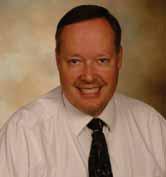
it. And there’s some that can’t, and you can’t.”
Cracking down on drinking, cranking up production
Alcohol abuse became so prevalent in southern Utah that Young counseled Saints in 1873 to be “temperate and wise in the use of intoxicating drinks.” Despite imbibing himself on occasion, the church leader, Lancaster wrote, believed wine should be reserved for export and “not drunk by the Saints except in taking the sacrament.”
In 1880, the Word of Wisdom evolved into more of a commandment and was considered binding on Latter-day Saints. That was followed in 1884 by the president of the St. George Stake, a regional church leader, who decreed that drunkenness would no longer be tolerated and that habitual drunkards could not hold positions or retain good standing in the faith.
“There were stories of bishops and high councilmen being released because they were too drunk,” Hansen Park said. “It was becoming a major problem.”
Even so, spirited attempts to quash any problem drinking in southern Utah often did little to quench Latter-day Saints’ thirst for wine. A case in point is when Young, concerned about members’ indiscriminate tippling throughout the day, persuaded city leaders to pass an edict making it illegal to buy wine in amounts smaller than 5 gallons.
Soon thereafter, Young happened upon an intoxicated Brigham Lamb on the street.
“As he approached his church leader and before President Y oung could reprimand him,” Lancaster wrote, “Brother Lamb said, ‘President Young it is utterly impossible to drink 5 gallons of wine and stay sober.’”
Even partaking of sacramental wine was not sacrosanct for some members, who would drain the silver goblet in a single gulp. And when Young introduced small tumblers, or sacrament cups, to remedy the problems, many members devised a workaround.
“That didn’t help, too,” Hansen Park said, “because people began taking multiple cups.”
At the same time church officials were cracking down on drinking, they were cranking up wine production. Latter-day Saints, it turned out, were paying their tithes in grapes in St. George and Toquerville, among other places.
The church soon became the area’s largest wine producer, buying wine presses and selling any surplus to miners and other “gentiles.”
“It was quite an embarrassment for church authorities,” Lancaster wrote, “to stress abstinence from wine when the tithing office was the largest producer of the beverage.”

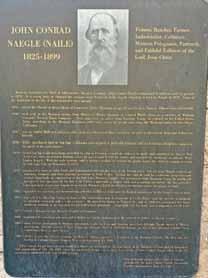
Withering on the vine
A plaque on the historic John C. Naegle home and winery in Toquerville. Naegle — whose Nail’s Best was regarded as the finest wine in southern Utah — produced about 3,000 gallons annually.
MARK EDDINGTON The Salt Lake TribuneEventually, southern Utah’s wine industry withered and died. Its demise was due to a combination of factors. One of them was the pressure church leaders exerted on drinkers. Another was greedy winemakers trying to sell poor or insufficiently aged wine that was inferior to the California wine brought in by the railroad.
Another nail in the wine mission coffin occurred in the 1880s, when the closing of the silver mines in nearby Silver Reef drastically reduced wine sales to miners. And the coup de grâce came July 9, 1892, when the St. George High Council enacted a resolution declaring water would supplant wine at Latter-day Saint sacrament services.
Water eventually became universal for Latter-day Saint Communion.
Gradually, Lancaster wrote, southwestern Utah farmers began uprooting their grapes and replacing them with other crops.
One takeaway from the wine mission, Hansen Park said, is that alcoholism was a big problem then and remains so to this day — a major factor in abuse, violence and economic woes.
“I don’t think alcohol is morally or inherently wrong,” she said, “but it can be dangerous.”
Perhaps the last word, though, belongs to Lancaster, who wrote:
“The history of the wine mission remains … a witness of what the Saints can accomplish when their hearts are in their work.”
Even if it, ultimately, was against their religion.
Utah author on writing, faith and landing in the book-banning controversy
Shannon Hale, a storyteller for all ages, reflects on her 20-year career: “You never stop fighting for it.”
By PALAK JAYSWAL | The Salt Lake TribuneAuthor Shannon Hale can’t help but remark on how different the University of Utah’s campus looks now, compared to when she was a student.
Today, her eldest child is a student at the U. Back then, more than two decades and a successful writing career ago, her origins as a published author started on this campus.
“I spent more time in [the Marriott Library] when I was researching my first book,” Hale said, “than I did all the time that I was here going to school, because I was desperate for it. It was pre-internet.”
That book was “The Goose Girl” — the young adult fantasy book, inspired by a Grimm fairy tale, that Hale affectionately calls “her baby.” Hale celebrated the 20th anniversary of its publication in August.
Since then, she has written 42 books children’s picture books, young adult tales, comic-book inspired works, novels for grown-ups and a multipart graphic memoir — aimed at audiences from small children to adults. She has even ventured into movies, partnering with Jerusha Hess (the co-writer of “Napoleon Dynamite”) to write a script adapting Hale’s comic novel “Austenland” into a 2013 film, directed by Hess and starring Keri Russell and Jennifer Coolidge.
In those 20 years, Hale has become a household name to readers in Utah and beyond. In her standing, the content of her work and, recently, the controversy accompanying it, she has become something like Utah’s version of Judy Blume.
Reflecting on her 20 years as an author, Hale said, “It is a moment where I have to step back and say, ‘Oh, I’m not new anymore.’ Certainly in writing, you never feel like, ‘Oh, I’ve got this figured out. I know how to write a book now.’
“You’re climbing, but the mountain is rolling underneath you,” she added, pantomiming a climber scrambling uphill, “and the rocks are dropping away constantly and you never stop the struggle. You never stop fighting for it.”
Hale, 49, has lived in Utah her entire
life, raised in what she calls a “very orthodox LDS household.” She served a mission in Paraguay and was married in the temple. She remained an active member of The Church of Jesus Christ of Latter-day Saints for more than 40 years.
Utah has often inspired her books. The landscape setting of her “Princess Academy” fantasy series is based on the Wasatch Front. She starts the action in her science-fiction thriller “Dangerous” (2014) in Utah. Her comic novel “The Actor and the Housewife” (2009), she said, is the only fictional work she has written th at’s about Utah itself. Her graphic memoir trilogy — “Real Friends” (2017), “Best Friends” (2019) and “Friends Forever” (2021) — is about growing up in Salt Lake City.
Belonging in two very different spheres, as a writer and as a Latter-day Saint, Hale said, has been an undercurrent in her books.
“I’ve always held this kind of place of tension between living in one absolute but also holding a second reality,” Hale said. “The tension between those two things is in everything that I write. The tension of being taught things that I needed to believe completely, but that part of me always felt uneasy about.”
How she got here
In two decades, Hale said, her approach to writing has evolved. “I would say every single book I’ve written has had a different process.”
She said she has “made friends with outlining,” so she can problem-solve issues more easily before diving into the narrative.
It took Hale four years to write “The Goose Girl,” she said, and now she tends to write two books a year. And, with four kids, Hale said she grabs time to write whenever she can — 30 minutes here, 45 minutes there.
On her website, Hale wrote that she thought her dream of becoming an author was once “impossible” and, in a way, she said that rings true today.
Living her dream, though, “is tempered
Please see
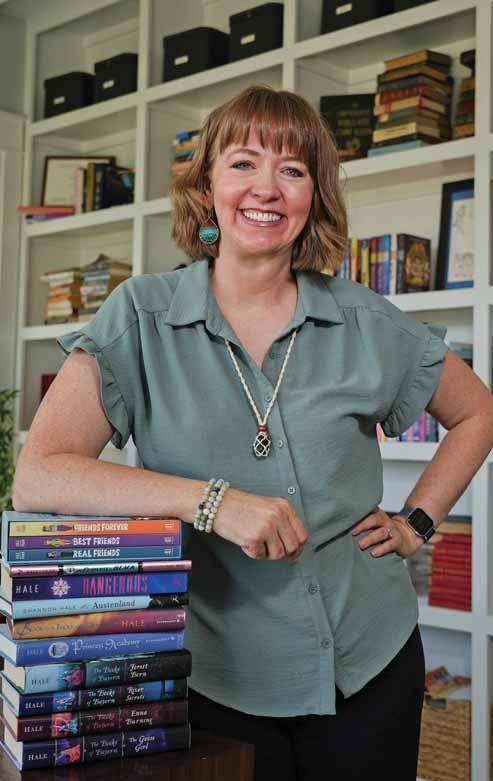




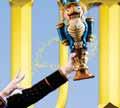


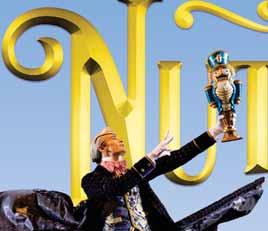







Shannon Hale
with the practicality of real life,” Hale said, noting that while being an author, she also is doing laundry and getting her kids to clean up after themselves.
“It doesn’t feel like living the dream in the middle of it,” she said, “but, nevertheless, I love what I do.”
Hale started writing fantasy stories at age 10. She said a lot of what she wrote as a young child reflected what she was reading then: “Nancy Drew” mysteries, C.S. Lewis’ “The Chronicles of Narnia” and the books of fantasy author Robin McKinley.
“I’ve always been a storyteller, because before I was writing things down, I was making up stories,” Hale said. “I was a chronic daydreamer.”
While she said she loves writing for all ages, she especially enjoys producing works for fourth to sixth graders — because the books kids read at that stage are life-changing.
“[It’s] when you first start discovering the stories that help you make sense of the world, and start to figure out your own self,” she said. “It’s the way you interact with the stories you’re going through. This process of self-discovery, in a way, that’s foundational for the rest of your life.”
Modern-day challenges
Last year, ahead of Banned Books Week, Hale wrote an open letter, signed by 40 other Utah children’s book authors, decrying the “plague of book banning.”
As someone “deeply invested in the power of books and who cares deeply about children and teens,” she said, watching the rise of efforts to ban books has been “heartbreaking.”
“Suddenly people who have grown up being used to books being all about white, straight people are seeing something else: More representation of what’s actually out there,” Hale said last year. “And it’s making a lot of people afraid.”
Hale said her main reason for writing the letter was to “support librarians and teachers,” because “they’re out there on the front lines, and they’re receiving the brunt of it.”
This summer, according to the website LGBTQNation, a school district in Katy, Texas, near Houston, halted access to new library books over material one school board member called “sexually explicit.”
One of the books at the center of the fight was Hale’s 2021 children’s picture book, “Itty-Bitty Kitty-Corn,” which is about a kitten that wants to be a unicorn.
The school board member reportedly

texted that the “main character does want to transform into something they are obviously not.” (Another parent in the district posted a screenshot of the board member’s text on social media.) The board member also, inaccurately, wrote that Hale used a gender-neutral “they” pronoun for the kitten, who is clearly identified in the book as “she” and “her.”
Because of her anti-banning letter, Hale said, “I’ve been put on a lot of do-not-buy lists. … That affects my career, my ability to support my family. So I don’t like doing it, and I don’t get any advantage out of doing it. But I feel like I have to, because if you know that something’s important, and you know that kids are being hurt, you have to speak out.”
It’s not the first time Hale has been outspoken. She frequently has argued with teachers who separated boys from girls at her book readings, saying that boys should be able to listen to stories with girls as protagonists. In 2018, she criticized the FanX Salt Lake Comic Convention’s management over its tepid response to accusations that a prominent male author had touched a female author without her consent.
Hale said she doesn’t regret writing last year’s letter, and she tries to ensure every decision she makes — as an author, mother and person — is full of love and compassion.
“I’m in a place of privilege where, because of the years that I’ve been doing this, my voice has a certain weight — which, to be honest, still feels weird to me,” she said. “I don’t feel like my voice has weight, but
people tell me that it does. So if I do have that, then I should be using it to support other people. I don’t know if it’s helped. I hope it has.”
The criticism is hardly new, she said, because she’s received critical emails for every book she has ever written.
“For the same book that I heard [criticism] from my fellow church members, I also heard from other fellow church members: ‘I’m so glad that you’re writing stuff that I can trust and feel safe sharing with my kids,’ or my grandma or whatever,” she said. “There’s not one universal response from any demographic.”
Parents, Hale said, should have the right to decide to opt out of having their children read whatever books they want. However, she added, the current censorship campaigns are “getting to the point where it’s just a fear-mongering tactic, and when people are afraid, they’re more easy to control.”
The state of the world — particularly where the content of books, and the banning of them, is concerned — weighs on her as she writes, she said. It’s daunting for all authors, particularly those who are queer or people of color, to be creating now.
“What will the audience think of this? Will I offend anybody? That’s always a question that you think about and you have to turn off, because it is paralyzing,” she said. “You cannot write anything, you cannot create anything, if you have to anticipate what the reaction of every single person who encounters that will be. … We cannot smooth it all out to be inoffensive
to everybody.”
Hale added, “All you have to do is just try to keep being the best human you can be … because the human that you are affects what you write.”
Thinking about the future
Looking toward the next 20 years, Hale said, jokingly, “I just hope that I don’t lose my job to A.I.” because she has “so many stories I want to tell.”
Asked about her greatest accomplishment to date, Hale said, “Sometimes, things were really hard. … Life at times is really hard, and I kept going.”
If it were all to go away, she said, “If the only thing I did was write ‘The Goose Girl,’ that would be enough.”
Hale said she recently had a mindful meditation experience, where “I had kind of a moment, where I saw the earlier versions of myself, as if I was looking at the bookshelf of all the books I’d written. … Would I throw away ‘The Goose Girl,’ because I didn’t know as much when I wrote it as I know now? No, I wouldn’t — it is precious and deserves to exist by itself.”
The meditation, Hale said, gave her writer brain a metaphor for “the earlier versions of myself, even if they’re different than who I am now, even if I think that I am more enlightened now and have experiences that have helped me become a better person, in some ways, than I used to be. [It] doesn’t mean that the earlier versions of me didn’t deserve to exist.”
Parables teach LDS and others valuable lessons, but each one has its limits
In 1992, Brigham Young University professor Stephen Robinson invented one of the most beloved metaphors in Mormonism.
His book “Believing Christ” became a sensation in The Church of Jesus Christ of Latter-day Saints. It targeted the harsh side effects of the “demand for perfection” in the church. Lesson manual after lesson manual, General Conference talk after General Conference talk, offered instructions and guidance and three ways to do this and four steps to accomplish that. For Robinson, it had all become too much. He called for members to cut themselves a break. Nobody was perfect. The premise of Christianity was that Jesus Christ’s atonement would save all in

MATTHEW BOWMAN
their imperfections. Members needed to worry less about perfecting themselves and relax into the basic truth of Jesus’ love for them.
Perhaps the most popular snippet of Robinson’s book was a famous metaphor
Please see PARABLES, 18
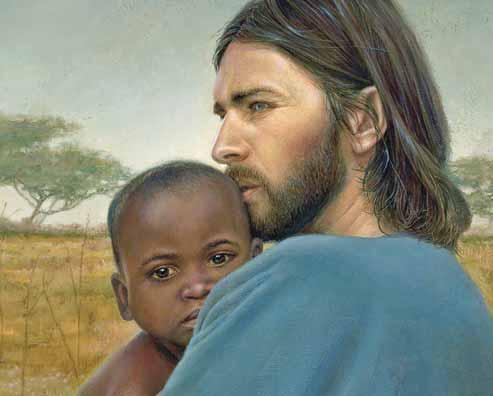



— the “parable of the bicycle.” As Robinson told the story, he encouraged his young daughter to save and save and save her pennies to buy a bike. But when she realized how insufficient her 61 cents were, Robinson stepped in and paid the balance. Thus, Robinson said, is the atonement of Christ. We save all we can, and Jesus makes up the difference, whatever it is.
In the parable of the bicycle lurk both the value and the pitfalls of metaphor when we talk about religion.
The parable paradoxes
Metaphor as a tool to describe the work of religion goes back to the New Testament. “The kingdom of heaven can be likened to,” Jesus said, “a mustard seed”; “a man seeking beautiful pearls”; “a treasure hidden in a field”; “a man who sowed.” There are at least two striking notes to make about these parables. First, Jesus drew on common items around him to teach. Second — and this is the purpose and power of metaphor, poetry and art — God’s kingdom is no single thing.
Metaphor is allusive and incomplete, blurry around the edges. It works because it gestures to meaning but also leaves us with the sense that the metaphor might indicate much more. Jesus’ parables are, in their structure, paradoxes; they embrace the common and the strange. They seem firm and simple — all that planting and digging — but we never lose the sense that there is something more past the plain truths they teach. They remain enigmatic, and we know that because Jesus moves on from each one to compare the kingdom to something else.
Which brings us back to the parable of the bicycle. It both punctured but also reinforced the metaphors that shape how Latter-day Saints have talked about what it means to be religious for the past 60 or so years. These metaphors are so powerful that members have forgotten they are metaphors As such, they’ve become assumptions, maps for how reality works.
God isn’t a celestial accountant
The two dominant metaphors for Jesus’ atonement at work in the church today are law and finance. In the first metaphor, the atonement is about justice and mercy. The universe is a cosmic judicial system. In the second, the universe is a cosmic bank, and the atonement is about debt and compensation.
These metaphors make sense to

contemporary Americans, who take a break from thinking about their mortgages and credit cards when they watch “CSI” on Hulu. The parable of the bicycle fits neatly into these worlds. It also reinforces wider cultural trends at work in the church — and in American Christianity.
The popularity of these metaphors in the modern church also makes sense. For decades after the abandonment of plural marriage, Latter-day Saints pursued middle-class respectability. In the United States, this meant law, medicine, business. The ranks of these professions filled church leadership, and the metaphors of these professions filled church manuals. These were men accustomed to thinking about the world in the language of contracts and finance and payments and forgiveness.
The result is that these sorts of metaphors permeated Latter-day Saint language and culture at the turn of the 21st century. In a sense, this is good and necessary. After all, any religion must speak to the world in which it finds itself. But when church members cease thinking of these as metaphors, tools for describing a universe, metaphors can become handcuffs, and the result can be a God who is a celestial accountant, a vending machine, to borrow from apostle D. Todd Christofferson’s metaphor, who gives us a can of blessings in exchange for
50 cents of good works.
This is transactional religion; religion shaped by the marketplace of modern capitalism. Seen in this light, the strains in the parable of the bicycle become evident. Robinson rejects utterly the transactional vision of what religion is; he is worried for his family members who have come to think of being religious as simply an endless series of obligations. The parable of the bicycle relieves much of that pressure. Yet it also exists within a world in which we must save our money, and Jesus’ atonement is analogous to debt repayment.
More metaphors, more meaning
There are meaningful and important ways in which Jesus’ atonement can be thought of as the repayment of a debt, of course, and meaningful and important ways in which the practice of Christianity can be thought of like an investment. But religion is healthier and stronger when it does not bind itself to a single metaphor. Rather, we might think of the church through other metaphors. Christian theologians for centuries have devised many ways of thinking about the atonement, from a quite literal defeat of Satan to Jesus choosing to maintain a loving relationship with
Getsemani, or “Gethsemane,” by artist Jorge Cocco Santangelo, was on display in 2018. Christian theologians for centuries have devised many ways of thinking about Jesus’ atonement.
LEAH HOGSTEN The Salt Lake Tribuneanxious people who run from him. Neither requires a divine accounting and balance of sin and redemption.Similarly, it is obvious when examining the covenant systems of the Hebrew Bible, that these covenants do not work like contracts in modern America. For one, the covenant is never off when humans fail to keep it, as they endlessly do. For another, God’s promises do not come contingent upon any behavioral expectations: He keeps his promises separate from the commandments he gives.
The church is well equipped to think of behavioral expectations and commandments through metaphors far removed from investment and return. The most obvious of these revised metaphors is the family. In a family, people serve and do things for one another out of love and concern, rather than out of fear of punishment or hope for a reward. These ideas may never supplant the metaphors we more commonly use, but they can enrich them.
Matthew Bowman is the Howard W. Hunter Chair of Mormon Studies at Claremont Graduate University and the author of the recently released “The Abduction of Betty and Barney Hill: Alien Encounters, Civil Rights, and the New Age in America” and, in 2012, “The Mormon People: The Making of an American Faith.”
Here’s a column on one of my alltime favorite subjects: me.
That’s supposed to make you laugh. This thing’s not meant to be about me as much as it is about my faith journey — and, perhaps in some indirect way, about yours, too. They’re probably not the same, but that’s OK. I hope you don’t mind if I get personal for a minute or two, even if it seems clumsy and cryptic in places.
Here goes:
I have both appreciation for and questions about my church, yeah, Utah’s dominant one, The Church of Jesus Christ of Latter-day Saints.
But even as I have the former, the latter sometimes is a mix of soothing answers, answers that are fulfilling, leading to increased faith, and answers or nonanswers I don’t like, leading to frustration. Still, l love my faith, have relied
on it and feel deeply attached to it.
Getting caught in that faith-frustration vortex puzzles some folks who wonder why and how, if I disagree with some stuff, I stay with it. Maybe some readers can relate to that in the ebbs and flows along their own tidal paths. Maybe others can’t.
Some people want out of this — and every corner — nothing but criticism of the church, no compliments. Others want the opposite. Only sunshine, no shade.
In my life, there’s been both.
Faith, at least for me, is a funny thing, not bust-a-gut funny, just different, unlike anything else I’ve experienced. Typically, I look for empirical data and other basic facts to govern my thoughts and actions, to form opinions and attitudes, to make decisions, to seek knowledge and truth. Logic makes a lot of sense to me.
Emotion has its uses, but I try to lean


away from allowing that to have much control. An exception is the love I have for my wife, my kids, my grandkids. In those instances, deep feelings flow.
Acquiring, developing and maintaining faith have come via similar deep feelings.. That’s right, feelings. But it’s not emotion. It’s three fairways over from emotion. It’s a sense of correctness, a sense of peace, a sense of comfort and clarity, a sense of being





close to God, feeling dialed in, a sensation that registers in my soul, not in any rock-steady way. In fact, there are times, probably based on my wandering mind, my human condition, m y own frailties, when that sense is like a Super Ball hurled in a shower stall It ricochets here, there, everywhere .
Trouble is, I’m a natural skeptic When someone tells me something that seems and sounds fantastical, I’m inclined to doubt it. Faith around here doesn’t come easy.
In the eyes of the Almighty, I see myself as nothing special, just a regular dude trying to make his way through this earthly existence, bumping and skidding as I go. But there also have been times of triumph and tragedy — when I’ve felt touched by the hand of God, not because I’m anything special, just because I was Please see
MONSON, 20















Monson
either in a heightened state or in desperate need.
My Latter-day Saint roots
I was raised in a Latter-day Saint family, my father, a remarkably smart, spiritual man, jammed into the same vortex as me. He was a scientist who spent his time studying and relying on the foundations of chemistry and physics. Logic was the seat he sat on. But he taught me early the rudiments of other fundamentals — prayer, respect for other humans and for the heavens. He was open-minded enough to consider a range of philosophies,, but The Church of Jesus Christ of Latter-day Saints was where his religious beliefs settled, firming up like steel brackets in concrete.
He asked a lot of questions and did a lot of research to find his answers. At times, he found the same frustrations I have. But he also found answers about his identity, his purpose, his destiny and how to draw closer to God and help others. He learned to hold onto faith and allow it to bridge the gaps along his religious road.
My story is pretty much the same. The church brought direction into my life as a kid growing up on the East Coast, wondering what this whole deal was really about. I prayed, I read, I lived. And I experienced stuff that I cannot, not to this day, fully explain. Small touches from heaven, I guess. I had friends who fed on similar pieces of manna. I went on a church mission to Germany, even though on the mission application papers, where it asked what my least favorite subject in school had been, I answered “German.” One of my preferred subjects was … Spanish.
Meine gute!
Sometimes, God — or, rather, those who act in God’s stead — doesn’t seem to listen.
The call said to go to Dusseldorf and the cities around it. And while I hated Provo’s Missionary Training Center, hated it, felt trapped in that sterile, woeful place, I learned to love the people I interacted with once I got to Germany. Not all of them, but the ones I was able to teach, there was just something about those relational exchanges that switched on a sensation that I’ve already described, tried and failed to properly describe. It was meaningful and powerful. The mission was also one of the hardest things I’ve ever done — physically, mentally, emotionally. But spiritually, it was a rocket to ride.
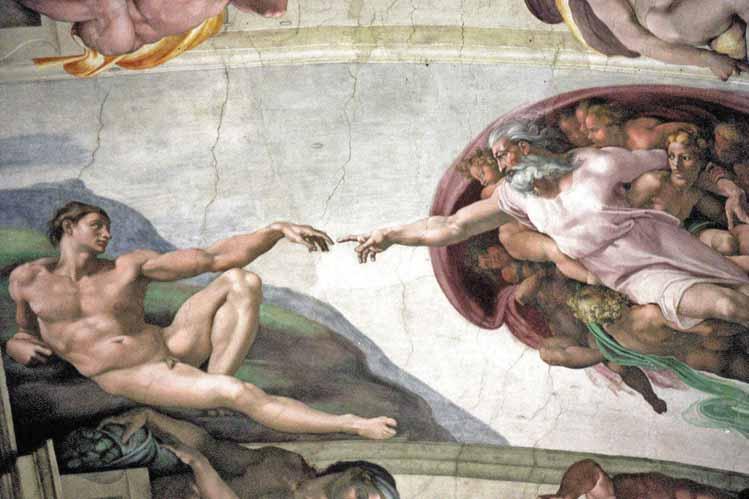
In the years thereafter, I met the woman who became my wife, the best person I’ve ever come across. We had and reared five daughters, wonderful humans who constantly bless my life — all of them spiritual, too, some of them believers in my same faith, a number of them have taken a different religious route. They’ve answered a different call, and I’m happy that they’re happy.
Even as I’ve torn into the world of sports, complimenting and criticizing some of your favorite and least-favorite sports figures in the written word and the word that came through the car speakers, I’ve always felt that connection to God in heaven.
Even when I’ve done dumb things.
Small graces of God
I’ve had enough touches, though, to grow my faith, even after stretches when I’ve run across church teachings that I thought were bogus, when I’ve seen cultural actions and attitudes that appeared to be anything but godly, when I’ve been
uncertain regarding things about which I’ve read, cogitated and prayed.
When it comes to spiritual endeavors, I know what I’ve studied, I know what I’ve experienced, I know what I’ve settled on, I know what I’ve doubted. Beyond that, I don’t know much. I know what I believe, and my church has played a role in a whole lot of that. I’m grateful for it. I’m sorry if my church’s teachings hurt some people, sorry if the application of those teachings by way of imperfect human minds, mouths and hands hurt people.
My interpretation of my own beliefs is, at least when it comes to people’s status before God, to let them be what they are, to accept them, to do my best to love them, just like a fellow named Jesus said to do. If they do stupid things as it pertains to matters outside of religion, like, I dunno, sports, I will sometimes rip them, but I won’t, unless they hurt innocents, condemn them before the Almighty.
That’s not my job.
So it’s those touches through my life that have formed and framed my religious beliefs. If you have different beliefs or have
no beliefs, you do you. Live and let live. Would I change some cultural and doctrinal items in my church if I could? Yeah, as I’ve often stated in this space. Maybe other believers would do likewise. Maybe God would, too.
I’ve run through enough imperfection in my own life when it comes to matters of faith to respect it, or tolerate it, in others, even as I openly share my ideas. But I also deeply appreciate the perfect, personal moments, the times when bits of inspiration, small graces of God’s friendly favor, have floated down to me and to those around me.
I’ll go on asking questions, because I have them, still, frustrations and all. But I’ll hold onto my faith because I can’t deny the experiences I’ve had, the answers I have found. If you’ve had different experiences and answers that have caused you to believe differently, hold onto what is yours.
And we can all bump and skid through this earthly existence together, helping one another where we can, giving one another our hand and our hearts, as we go.
Iam a believer in the principle of tithing. As I have written elsewhere, there is an important perspective to be had in deciding that you have enough and can return something to the Lord.
However, I recently listened to some women discuss their decisions to allocate tithing to organizations other than The Church of Jesus Christ of Latter-day Saints. I was struck with an observation that I have been unable to shake. They were experiencing an emotion that I have not felt within church settings as they decided how to direct their resources: joy in exercising agency and making decisions. I want to feel that joy.
Agency matters to our happiness. We know this. Church lessons repeatedly stress that agency is essential to our growth and development. In my experience, though, the agency offered to women within the church often feels like the choice to conform with prescriptions, roles and budgetary decisions made or ultimately approved by men.




However much we say we value agency, there’s always a script: You are free to make the right choice. Agency comes with caveats, particularly for Latter-day Saint women.
Women are frequently told to stop seeking permission, but this is easier said than done because Latter-day Saint women also live within a context in which they, in fact, require (and can lose) male permission to access resources, authority, the temple, and priesthood blessings within church settings. Sisters must have permission and authority
delegated by men to act officially within the church. They must be deemed worthy to enter temples by two men asking questions drafted by men. They are excluded from leadership positions that do not pertain exclusively to women and children, including positions like financial clerk that have little to do with priesthood functions. Women who followed the prophetic counsel to stay home often also depend on men for their financial maintenance.

NATALIE BROWN
Some practical implications of this structure are that I have never seen a ward budget. I do not know how my tithing or fast offering money is spent. I do not even have a way to contact general authorities beyond my stake president, a regional lay leader who is not required to pass on any communication to higher-ups, in order to share my perspectives or ideas. We are raising young women who understand their potential, but we do not offer enough adult women an organization in which they can fully use their talents and exercise agency.
Some women I know will, of course,
disagree with this statement. I am glad that the church is meeting their needs. I would simply suggest, however, that we have a problem when a significant number of women perceive the situation as I do. This problem cannot be rectified by protesting too much over the pulpit that women who want more are wrong in their perceptions or by reassuring them that they really are equal and loved Too many of my peers have voted with their feet. As I begin my 40s, I am largely alone among my closest friends in remaining active in the church.
When the personal and the prophetic clash
The church teaches personal revelation, but it also teaches members to follow the prophet. It’s unclear which of these principles trumps when they clash. Sometimes, we are reminded that general authorities give only “general” and not personal
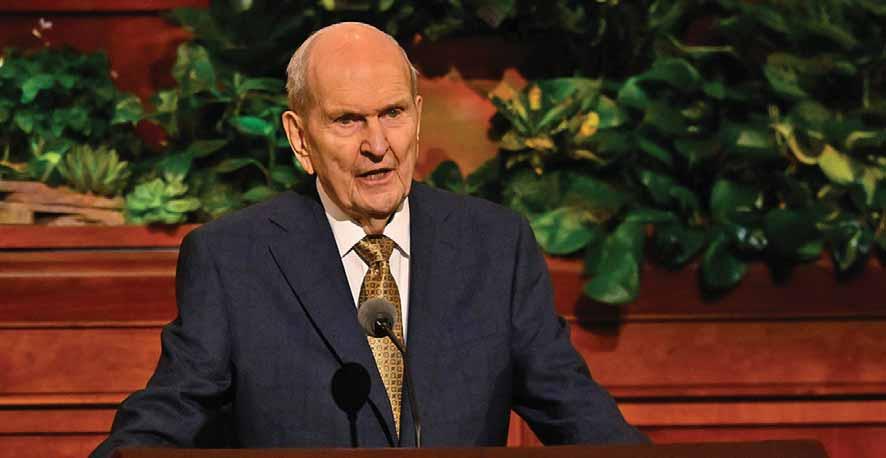
advice. Other times, it is implied that our personal inspiration would not conflict with the prophet’s guidance if we were only more faithful.
Like all Latter-day Saint women of my generation, I was told by Ezra Taft Benson, a former church president, that righteous women should stay home and rear children — a prescription that was reinforced throughout the Young Women curriculum. Benson, of course, did not have to bear the consequences of his advice. But to this day, I feel doubt over decisions I have made about my career as well as constant judgment. A recent discussion by therapist Julie Hanks clarifies that I am not alone in struggling with the multigenerational legacies of Benson’s teachings on Latter-day Saint women and their families.
Like all members, I am asked to tithe to an organization that does not invite my views on how money I earned is best spent. Because I do not have sufficient resources to tithe and significantly donate to other charitable organizations, paying tithing to a patriarchal, centralized church means that I do not get to experience the growth and fulfillment
that can occur when you give to and/ or have decision-making power over an organization’s resources. Women in the early, more autonomous Relief Society often exercised greater authority over economic and spiritual resources at church than Latter-day Saint women do today.
I am grateful that women have not been told that they must serve missions, but I agonize over how to raise sons for whom serving missions is an expectation. I have frequently heard leaders say that men who are worthy will want to serve missions, with the implication that men who choose not to serve missions have sinned. This formulation leaves little room for genuine agency. In my house, missions will be framed as a choice.
I could cite further examples, such as modesty rhetoric and being told how to dress, in which women’s use of their bodies has been judged and constrained. The deepest questions of how I should direct my life, use my resources and occupy my body occur within an institutional context in which men have already decided the “right” answers.
I have rarely been trusted to seek my own revelation when I have questioned those answers or sought more than the roles in which men have placed me. Too often, I have been met with threats of
discipline or asked to remain silent. I have been told that I do not understand the gospel. I have been labeled a complainer. Men and women have labeled me a complainer when I have suggested minor reforms. And people question whether such things have really occurred to me because women in the church are not trusted as authorities on their own experience.
Desires for a changed church
I want a church in which I can grow by making decisions and exercising authority, not a church in which I am simply asked to wait and follow. I cannot imagine who I would be within a church community that celebrated rather than constrained or shamed my agency, because I have never lived in one. I cannot imagine how it must feel to act on one’s righteous but unconventional desires without shame, guilt or receiving a lecture on how I have disappointed some man. I want something better for me.
My experience is valid. So is my desire to feel greater joy, agency and authority within church settings. I cannot wait another four decades for the church to become more inclusive of women, because my life is unfolding now.
Only men can make the institutional
changes surrounding gender that I think we need. I can claim, however, my own agency to interpret teachings in ways that feel more empowering to me and consistent with the Spirit. I can also choose which messages I will (not) pass on.
Women who have experienced trauma in the past surrounding their agency might be unable to decide simply that they no longer need permission to act in a culture that requires them to seek it and truly feel that way. We minimize the harms we have systemically inflicted by requiring women to always ask a man when we fail to recognize that undoing such harm will require structural changes in addition to personal efforts.
However, I want to test the prospect that God loves me enough that he will continue to bless and inspire me even if I don’t comport with other people’s interpretations of his rules. I want to contribute to the church community I love. And I’m ready to believe that it is secure enough to accommodate the more empowered person I want to become.
Natalie Brown is a writer, scholar, lawyer, mother and Latter-day Saint based in Boulder, Colo. She is writing in her personal capacity. Her views do not reflect those of the church or her employer.
Latter-day Saints love meetings, and these historic conferences far from Utah prove it
Before leaving for his fourth mission to New Zealand (his second as president of that mission) in 1928, John E. Magleby of Monroe, Utah, had an interview with Latter-day Saint apostle David O. McKay.
McKay had visited New Zealand in 1921 and participated in a conference there with members of The Church of Jesus Christ of Latter-day Saints. That annual conference, called “Hui Tau” in the Maori tongue, “was one of the great events of the world,” McKay told Magleby, “second to the great Mormon conferences held at Salt Lake City.”
The first Hui Tau was held in 1885, when Maori and English Saints from 20 small congregations gathered to listen to preaching and prayers by missionaries. The first formal conferences quickly expanded and, by the 1920s,

ARDIS E. PARSHAL
hundreds (and in later years thousands) of participants gathered for several days, not only to hear sermons but also to feast together, engage in musical and sports competitions, perform plays, recite Maori genealogies and
poetry, chant scripture from memory, and sell crafts to raise funds for the next year’s conference. Visitors slept in buildings erected specifically for the conference, selected a queen of the Hui and participated in religious testimony meetings that often lasted for hours.
The Hui Tau gatherings continued well into the 1950s and are sometimes credited with helping to preserve Maori culture against the onslaught of colonial influences. I’m not so sure McKay was right to rank the Hui Tau as second to conferences in Salt Lake City ... certainly Salt Lake City could boast larger gatherings, with higher ranked speakers and warm gatherings of former missionary groups, but I wonder how many members wouldn’t prefer a Hui Tau?
For Latter-day Saints who lived too far away from
Please see
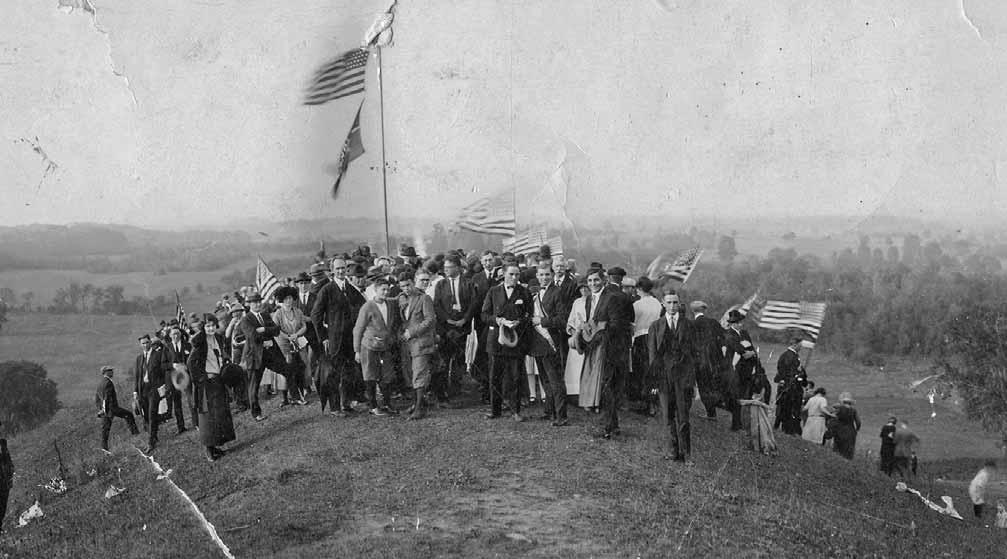
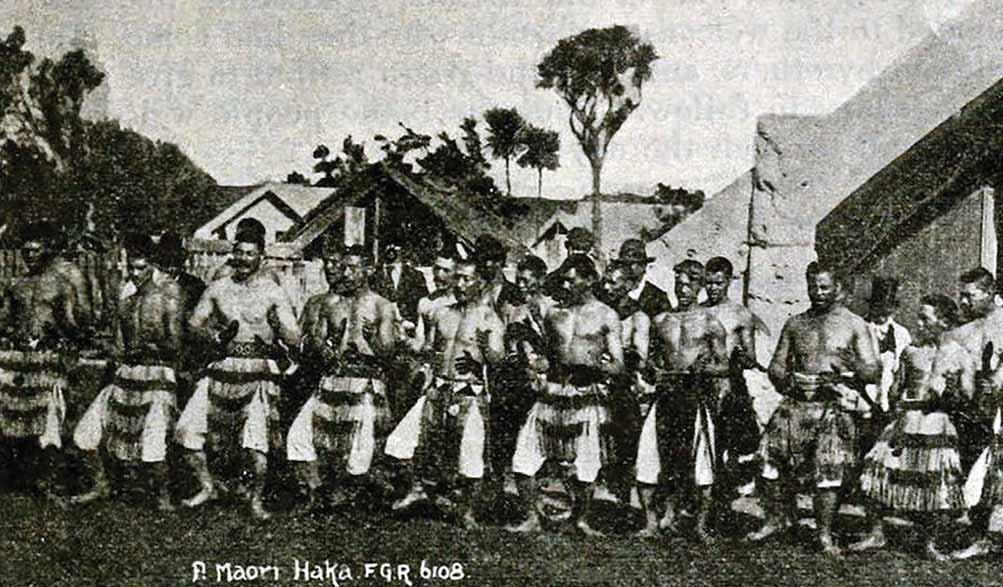
Parshall
≥ Continued from 23
Utah’s capital to attend conference in person, and in the days before radio carried at least some conference sessions to distant audiences, gathering for conferences as a mission (as a whole, or in some part) was as much as a meeting-loving people could aspire to, and such conferences almost always involved more time and effort than most of us can conceive today.
Alabama gathering
In summer 1898, in Alabama, that effort involved clearing ground in a brushy area of the farm belonging to
a member, erecting a brush arbor and buying lumber to make rough seating. It was hot work for the missionaries and locals — every local member listed in the diary of a missionary recording the effort was a relative of mine! — but at least they could look forward to morning and nightly watermelon feasts during construction and the conference.
The 16 elders working in Arkansas in 1897 also gathered on rude benches in the woods for their private sessions of conference at which assignments were made and instructions given. That conference, held in January, benefited from a roaring bonfire. Public preaching meetings, held over the course of three days,

Parshall
≥
took place in the schoolhouse by courtesy of the non-Latter-day Saints in the town of Headley, about 100 of whom attended each session. Providing a meeting place was hardly the only gift offered to the elders: Missionaries traveling to the conference were housed in the best hotels and treated to a turkey dinner for Christmas. Locals took in the elders during their gathering and brought them meals. Besides preaching, the elders sang for residents at an evening gathering. It all may not have met the standards of Hui Tau, but the spirit was the same. Such hospitality toward gathering Saints was far more often the case in that era than the persecutions we tend to dwell on — and is worth remembering.
Palmyra conference
One especially notable conference took place in Palmyra, N.Y., in 1923, to celebrate the centennial of significant events there in the early history of the faith. Under mission President B.H. Roberts, the gathering was supposed to be limited to elders and sisters of the Eastern States Mission, but the location and the months of planning for sessions to be
Please see PARSHALL, 26
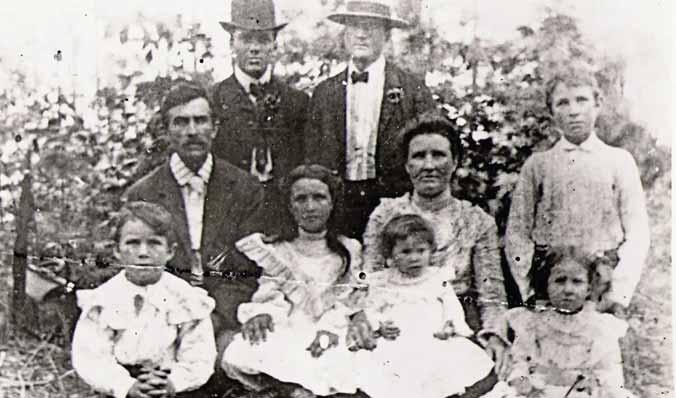
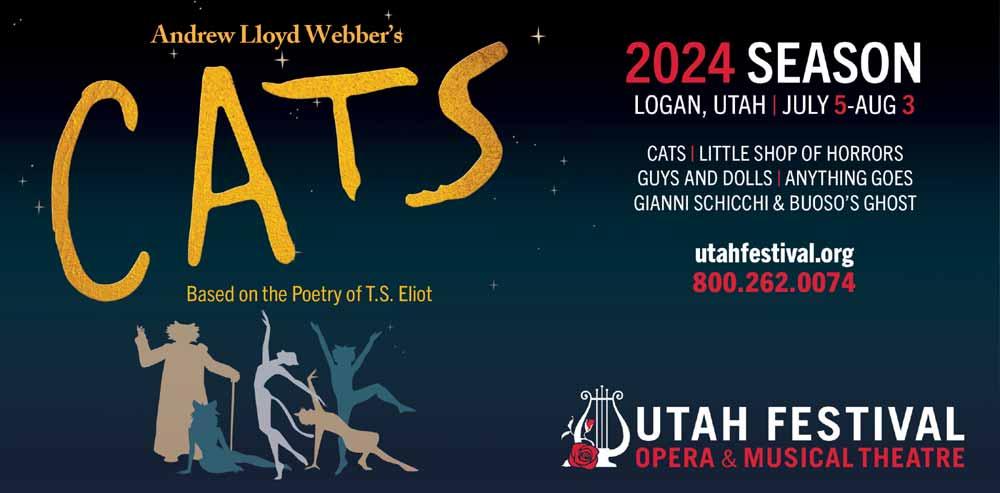
Parshall
≥ Continued from 25
held at the Sacred Grove and the Hill Cumorah — sites considered sacred to Saints — inevitably attracted far broader attention. Missionaries from surrounding missions begged to be allowed to attend; they were refused. No one thought of refusing the attendance of prominent leaders from Salt Lake City, who were invited to speak. Members and their friends from throughout the region planned to attend, but Roberts notified them repeatedly in no uncertain terms that they could not be hosted at the conference site, because its limited facilities were required for the missionaries. Nor, he warned, was the small town of Palmyra prepared to entertain crowds of visitors. Nevertheless, uninvited Latter-day Saints descended on the area, made the best they could of available accommodations, and flocked to the meetings.
The conference, planned for September, was preceded by a summer of unprecedented missionary work. Female missionaries were allowed to travel by train and car to the conference, but elders, no matter where in the mission they were assigned, were expected to make their way on foot, preaching along the way. Whatever effect such travel had on the people through whose towns the elders passed, the elders certainly gained a new appreciation for the labors of their spiritual ancestors in spreading the faith in the same region and through the same methods.
For three days during September, the elders gathered in conference on the grounds of the old Joseph Smith farm, and held testimony and commemorative events on the very sites where those events had occurred. These were no ordinary preaching meetings, either, with elders called at random to give typical missionary sermons. Roberts instead had assigned specific subjects to specific missionaries, expecting his elders to be fully prepared to support the themes of the meetings. All did not go quite as planned. Rain fell, although the conferencegoers were usually sheltered by the tent in which most meetings were held. Roberts himself, who had worked so hard and planned so well a conference to impress his elders with the sacredness of their calling, was too ill with the onset of the diabetes that eventually killed him to speak at length, or even to attend some sessions.
Roberts had secured permission from the non-Latter-day Saint owner of the Hill Cumorah for events to take place there,
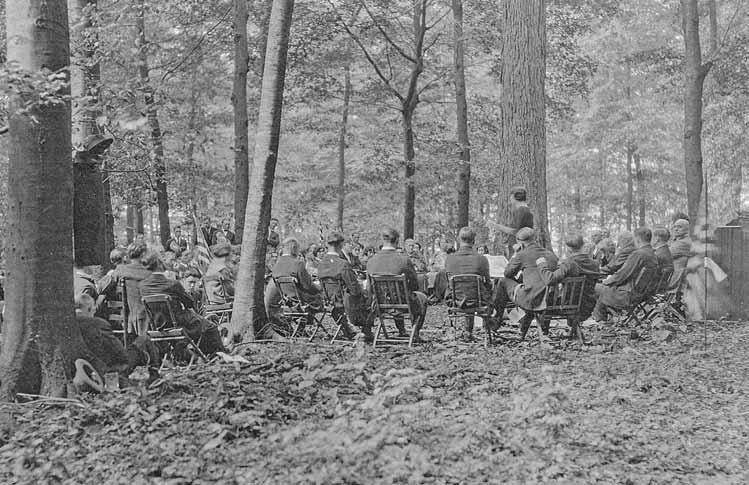
and the elders and their leaders marched in formation — as much as muddy conditions permitted — from the Smith farm to the hill for a Saturday sunrise flag raising. Although weather and muddy conditions forced other events planned for the hill to be transferred to the tent on the Smith farm, the recitations and historical themes of the conference are sometimes credited with inspiring the later development of the long-running and now-discontinued Hill Cumorah Pageant.
Sunday featured a testimony meeting, together with the sacrament, or Communion, within the Sacred Grove, a brilliant success in part because of the clearing of the weather. The sun is reported to have broken through the clouds and shone brilliantly as the conferencegoers sang their opening hymn, “O, How Lovely Was the Morning,” about the vision the faithful believe church founder Joseph Smith received in that grove in 1820. It was the emotional and spiritual culmination of a summer’s worth of work by the missionaries and their president. Even the greatest of New Zealand’s Hui Taus must have
Please see PARSHALL, 27
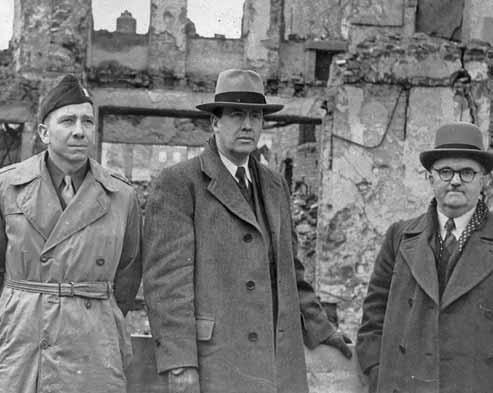
Parshall
≥ Continued from 26
paled in comparison to the gathering there that day.
Postwar Germany meeting
Another unforgettable set of conferences took place in the ruins of Europe in 1946, when apostle Ezra Taft Benson visited the Saints while working to arrange for welfare shipments to relieve their postwar suffering. One such gathering, in Hamburg, Germany, attracted more than 500 Latterday Saints, mostly women, old men and children. After offering words of comfort, Benson distributed the few supplies he had with him — chocolate and hard candy for the children, an orange for each expectant or nursing mother. One mother, spying a spool of thread with a needle in Benson’s suitcase, asked his traveling companion, fluent in German, if she could have the needle and thread instead of the orange. On her way to her seat, the woman was stopped by another who said she knew the woman would share her good fortune — “Our need is as great as yours.” As great as was their joy in seeing and hearing from a spiritual leader again, I wonder if the tiny temporal gifts of that conference weren’t better and longer remembered than anything that was said.
Most Latter-day Saints have had the frequent experience of gathering in local conferences, and, if they wish, “attending” General Conference by merely turning on a television or streaming it at home. Some enjoy the physical experience of attending in person, enough to stand in lines hoping for last-minute entry. The Saints are and have long been a gathering, conference-enjoying people, regardless of time and place. Opportunities for hearing church leaders and for engaging in other activities of the faith are, for most of us, easy to find — but in other times and places, the Saints still gathered when conditions were far from easy. Yet they clearly found it worth the effort.
Ardis E. Parshall is an independent research historian who can be found on social media as @Keepapitchinin and at Keepapitchinin.org. She occasionally takes breaks from transcribing historical documents to promote the aims of the Mormon History Association’s Ardis E. Parshall Public History Award.
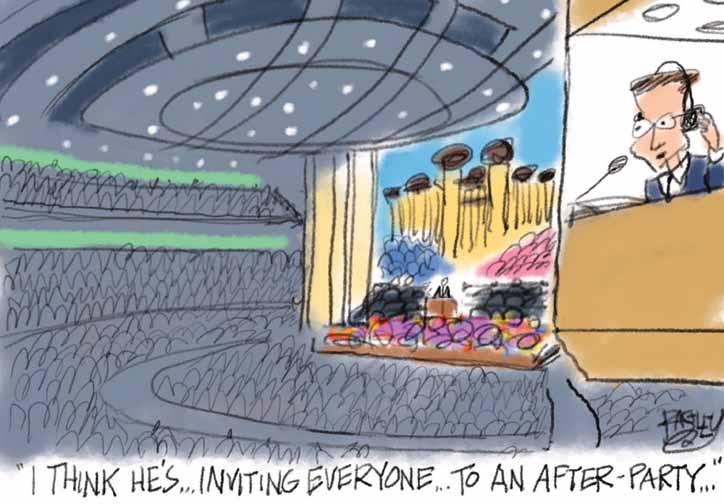
Gift of tongues eluded me as LDS General Conference interpreter
Mere weeks after I returned to Salt Lake City from my mission to western Ukraine in 2005, I was recruited to volunteer to provide interpretation services for General Conference sessions of The Church of Jesus Christ of Latter-day Saints.
I learned that while there was a deep bench of professional native-speaking interpreters for such languages as Spanish and French, the church was desperate at that time for anyone in Utah with basic proficiency in Ukrainian.
That’s how I, a supremely unqualified 21-year-old, who 24 months earlier couldn’t have even pointed out Ukraine on a map, ended up sitting in a fancy booth at the faith’s Conference Center in downtown Salt Lake City trying desperately to keep up with the translation of hours’ worth of sermons.
 ELI MCCANN
ELI MCCANN
I was hardly the first missionary to be dropped into the deep end on interpretation services. My sister likes to tell the story of a time she visited a Latter-day Saint sacrament meeting in Italy, where she was handed headphones to listen to the interpretation being offered by an American missionary who sat in the next room speaking into a microphone. During the meeting, the missionary went dark for
several minutes while an Italian speaker at the pulpit rapidly mumbled through what my sister guessed was a long and convoluted story before finally pausing to look down at his notes. During the brief break, the missionary’s defeated voice came through my sister’s headphones, “uh . . . I think he said something about a boat.”
Growing up in Latter-day Saint congregations, I had regularly heard about the miraculous gift of tongues bestowed upon missionaries, a gift that supposedly enabled them to master a new language in a matter of weeks of fervent study at Provo’s Missionary Training Center. Imagine my surprise several years later when I sat, wide-eyed and barely competent enough to breathe on my own, in a Soviet-era Kyiv apartment wondering why I didn’t understand a single word of a conversation happening in front
Please see
of me between a toddler and her mother.
My first Sunday talk in Ukraine
The next Sunday I was invited to stand at the pulpit in sacrament meeting to introduce myself to the congregation, having just arrived in Ukraine that week. After the meeting, I asked my mission companion why I had been laughed off the stage after muttering the two or three phrases I had repeatedly practiced that morning. He looked at me with such pity, contemplating whether to let me know I had misremembered the word for “new.” “Well,” he said. “I think you really lost them when you announced, ‘my name is Elder McCann and I’m horny. Fortunately, I’ve already met some of you, so I don’t feel too horny. I’m grateful that you have all helped me not feel so horny.’”
“Don’t feel too bad,” a friend who had arrived in Ukraine the same time

as me told me a week later, when I ran into him and shared my embarrassing story. “A few days ago I announced to an entire Sunday school class that I believe God murdered Joseph Smith.”
A few weeks after that I was assigned to be the choir director for our small branch in Lviv. After our second or third practice, I dismissed the group by tearfully informing them, “I really enjoy sleeping with each of you every week. You are all so talented, and it makes me happy that we all get to sleep together after church.” The choir was reduced to tears of laughter, and it took a minute or two for anyone to gain enough composure to explain to me what had happened. As we left the building to go home that night, a choir member put his arm around my shoulders and mumbled in broken English, “I think it will better if you more studying to speak.”
“I think it will be better if I more studying to speak,” I thought to myself in 2005 as I sat, white faced and shaking, in the Conference Center’s Ukrainian interpretation booth. Copies of the many talks had been emailed to us days in advance so we could practice,

but the email came with a warning that it wasn’t uncommon for certain elderly speakers to go off book.
It turned out I was right to be worried, or so I found out mere minutes into the conference session in which I frantically tried to keep up, frequently losing my place. A friend sat in the booth next to me, switching off with every other talk, performing about as well as I was.
The fatigue grew over the two hours of that morning conference session. I couldn’t help but picture my Ukrainian friends on the other side of the world, listening to me massacre their beautiful language, no doubt remembering times I inadvertently propositioned them for sexual favors while adorned in a black nametag and a cheap, oversized, boxy suit.
Looking back with fondness
I was fired from my interpretation job not long after this experience — I was told the powers that be had located enough native Ukrainian speakers to handle the work going forward, but I’ve always wondered if that was just a
polite lie.
I stepped away from the church many years ago. Fuzzy memories of my short stint as a General Conference interpreter feel almost like an odd fever dream to me now — as foreign as they are funny.
Even still, I’m grateful I had that experience. It was humbling, and I probably needed to be humbled. It was fun and exciting, although intimidating and exhausting.
More than anything, it makes me smile to know that somewhere, out in the world, there’s a video of an old man standing behind a pulpit speaking for a moment or two before my young flustered dubbed voice interrupts and says in sloppy Ukrainian, “I’m so sorry everyone. I’ve lost my place. By the way, I miss you terribly.”
Eli McCann is an attorney, writer and podcaster in Salt Lake City, where he lives with his husband and their two naughty (yet worshipped) dogs. You can find Eli on Twitter at @EliMcCann or at his personal website, www.itjustgetsstranger.com, where he tries to keep the swearing to a minimum so as not to upset his mother.

















